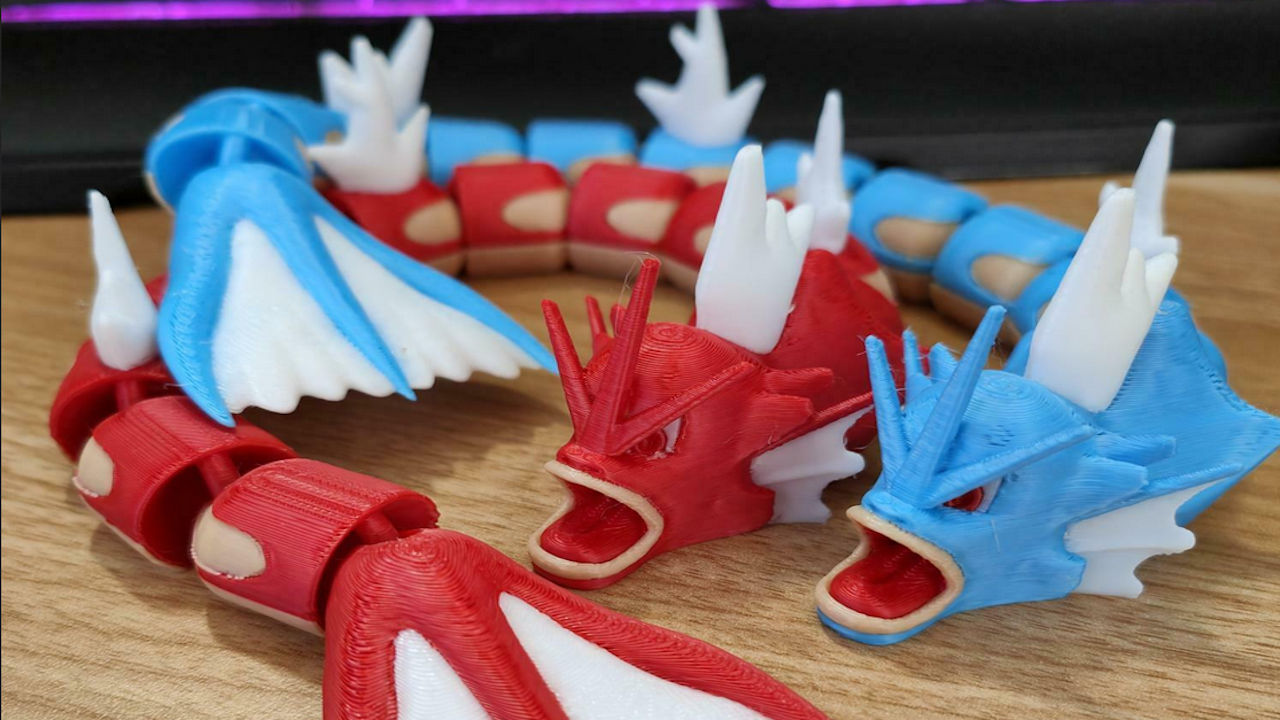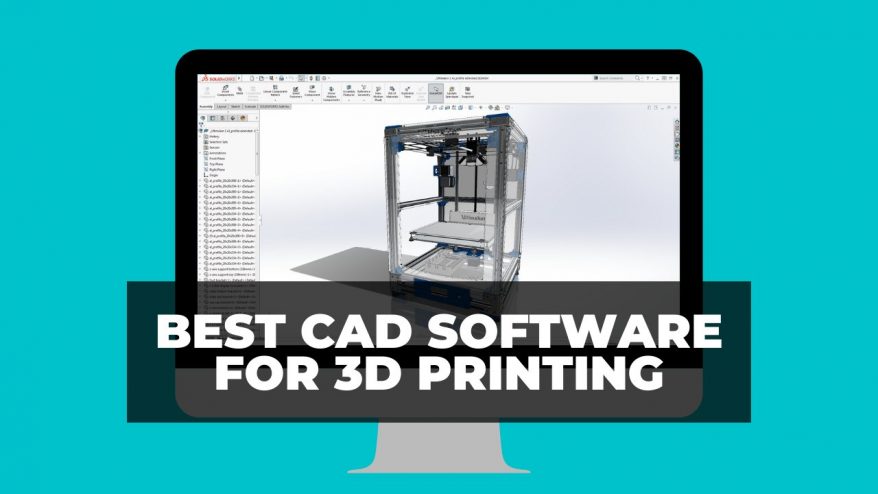
Structured Light vs. Laser Scanning – A Thorough Comparison


At 3DSourced we’ve covered everything 3D printing and 3D since 2017. Our team has interviewed the most innovative 3D printing experts, tested and reviewed more than 20 of the most popular 3D printers and 3D scanners to give our honest recommendations, and written more than 500 3D printing guides over the last 5 years.
Laser scanning for 3D modeling is relatively straightforward. Handheld scanners, for example, are simply pointed at an object, while static or larger scanners are used for objects which can be moved around. In the latter case, the object is laid on the scanner bed just as a document is in conventional 2D scanning.
What Are We Scanning?
Both structured light scanners and laser scanners are used, typically at short range, to scan an existing object to create a 3D printable model.
For example, you might have found an interestingly shaped vase in a thrift store that you think would look great as a custom product range for your store, or you may need to create scale models of buildings, sculptures, etc, as part of your work.
Read more: the best 3D scanners 2022
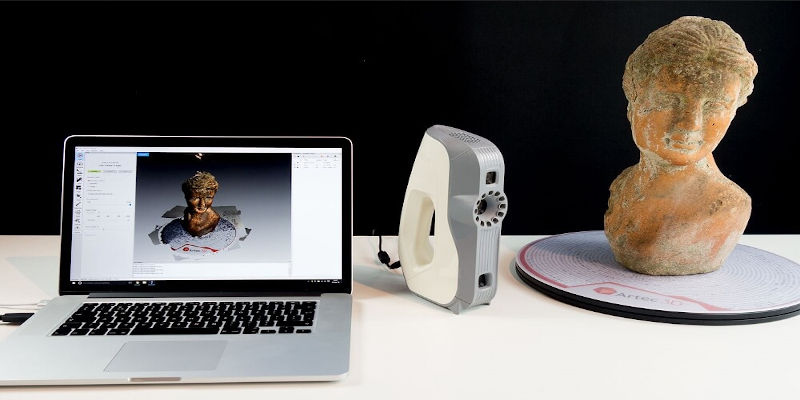
In both instances, you’re unlikely to find a 3D printable template for what you need. So, scanning the physical object, and using 3D scanner software to create a printable template from it, is necessary.
From trees to plant pots, buildings to pebbles, 3D scanning technology opens up the creative possibilities of 3D printing. In some cases, it puts those possibilities literally in the palm of your hand!
Laser Scanners: How Do They Work?
3D laser scanners work on a basic principle known as triangulation, which involves projecting a laser line at the object you want to model.
The laser then sends back information on the object to a series of sensors in the scanner. This information takes the form of thousands, sometimes millions, of individual data points.

Exactly how many data points are captured will depend on the nature of the object being scanned.
These sensors capture the reflection of the object, including details such as its size and shape.
This cloud of data points is processed by the scanner software and presented as a 3D CAD drawing. You can edit the drawing in CAD, adding features that aren’t part of the physical object, or removing features that detract from the result you want to achieve.
Where Are 3D Laser Scanners Used?
Laser scanners for 3D modeling are affordable and versatile. They also come in many varieties, from industrial-grade machines to handheld scanners for home use.
3D scanning technology allows for a wide range of uses, making it a very popular choice with professionals and hobbyists alike.
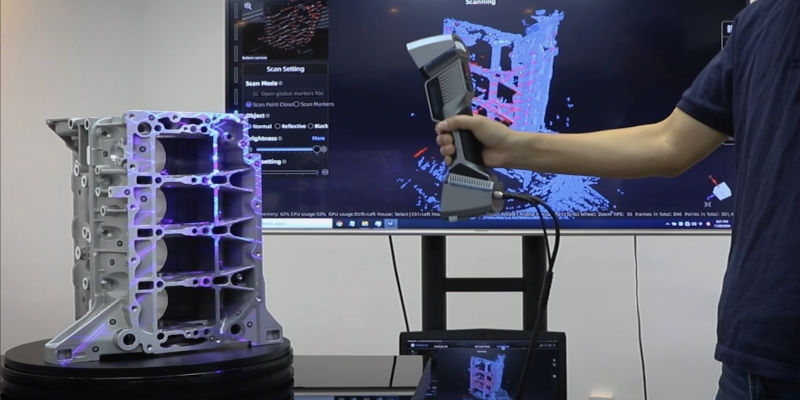
Hobbyists take advantage of the accuracy of 3D scans for recreating items with 3D printing or making 3D selfies, while professionals use the technology to help with medical practices, interior design, and architecture.
As you can see, the range of people who may find a 3D laser scanner useful for work or hobby purposes is diverse. In professional remits, 3D scanners are routinely used by architects, while someone looking to create a truly unique gift for a friend or family member may also enjoy the benefits of 3D scanning.
Are Laser 3D Scanners Easy to Use?
Like any technology, laser scanners have a learning curve. Depending on the complexity of the tasks you’re using 3D scanning for, this learning curve can be relatively straightforward, or quite steep.
Scanning a statue or bust for recreation is fairly straightforward, while scanning a person’s mouth for planning dental reconstruction is a far more meticulous and accuracy-demanding task.
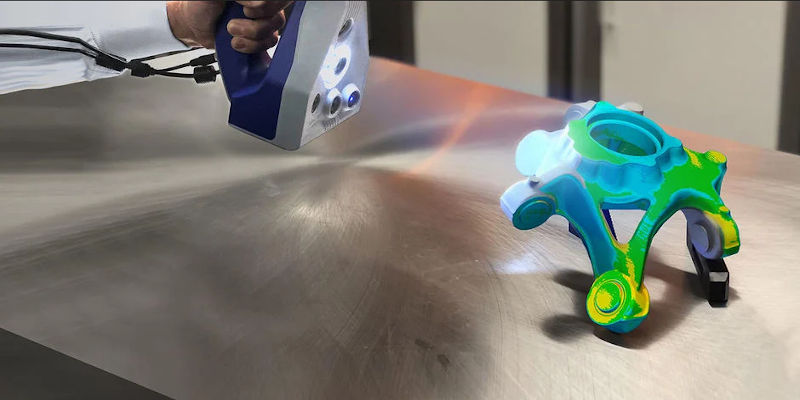
As with all tech, 3D scanning isn’t a ‘magic bullet’ that’s going to instantly provide the results you want. You need to invest time in learning how to get the best from your 3D laser scanner, as well as having the patience to refine your technique to achieve top-quality results.
Overcoming the challenges of laser scanning for 3D modeling is imperative to ensure reliable and industry-standard results.
Such challenges often center around learning how to maximize the amount of data you capture. That will involve understanding the angle you position the scanner as well as how factors such as ambient light levels affect and alter laser efficiency and scan quality.
How Does Ambient Light Affect 3D Laser Scanning?
If you’re scanning objects indoors on a laser scanner, you can control the light levels. However, for surveyors, planning department officials, and other individuals who may need to scan objects outdoors, natural light levels matter. Ambient light can cause disruptions to laser projection, resulting in errors in your 3D modeling.
Light levels are measured as ‘lux’. The optimum range for accurate 3D laser scanning is between 3,900-500 lux depending on the machine and the surrounding light levels.

If you anticipate scanning objects outside to create 3D printable models from them, it may be worth investing in a light meter for your 3D laser scanner. This will help you identify factors such as time of day, angles, and shade, or the absence of shade, from buildings and other immovable objects that contribute to high-quality 3D scans.
Laser Scanners for 3D Modeling: Pros and Cons
3D laser scanners are an affordable, versatile piece of kit for anyone who regularly uses 3D printing as well as medical scans for use in things like prosthetics, facial reconstruction, and dentistry.
If you’re looking to expand the ways in which you use your 3D printer, a 3D laser scanner is worth investing in, as it allows you greater flexibility in the kinds of objects you can print.
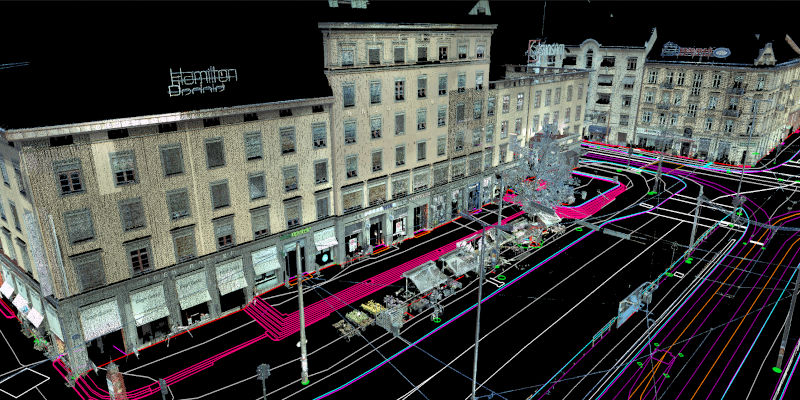
American 3D Scanning and fitness company Naked’s 3D Body Scanner, for example, is a large full body scanner designed for home use in monitoring weight and body shape over time to help develop a diet and exercise regime.
Read more: our guide to 3D body scanners
There’s also the Einscan range of 3D scanners made by Shining 3D. These are designed to help with 3D modeling of people and objects for alteration and rebuilding in CAD software before being 3D printed.
Benefits
3D laser scanners are relatively affordable. Ranging from under $230 up to $50,000, laser 3D scanning technology offers something for everyone.
As always with technology, you get what you pay for, but even a basic 3D scanner for occasional use is capable of producing adequate-quality results that will satisfy the competent amateur.
3D scanners typically provide reliable, high-quality resolution. This allows for more accurate 3D modeling, and means that less editing is required in CAD. Not having to do as much in CAD not only saves time, but also makes 3D scanning and printing easier for the novice user to learn and improve with.
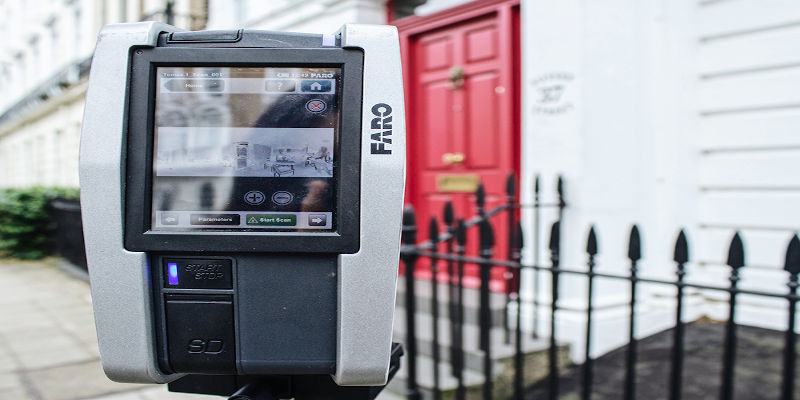
Essentially, 3D scanning eliminates the need to manually design a model from scratch in CAD software.
Providing a flexible and effective addition to any 3D printing experience, overall, laser 3D scanners are an affordable and effective tool for amateurs and professionals alike.
Laser 3D scanners are only designed for short-range scanning. While handheld 3D laser scanners can be used to scan larger physical objects, they’re not as suitable as structured light scanners for creating accurate impressions of things like buildings.
Drawbacks
If your job or hobby involves frequent modeling of larger structures and objects like furniture, people, or even buildings, you’ll probably find 3D laser scanners aren’t quite right for you.
How Do Structured Light Scanners Work?
Structured light scanners also create 3D models from physical objects using triangulation technology.
In contrast to laser scanners, which use a single laser line or laser point, structured light scanning projects patterns of light at the object you want to scan.
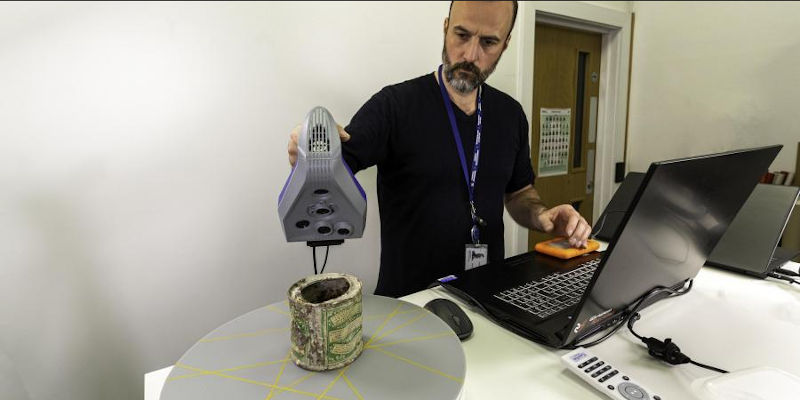
The light patterns are sent from a stable light source, such as an LCD projector, and bounced off cameras that are set at an offset from the light source.
These cameras are used to calculate the distance of every point in the field of view. This in turn allows structured light scanning technology to render highly accurate 3D plans in almost unrivaled detail. This makes it a good option for precision modeling.
Where laser scanners simply take data point impressions from the single laser projection, structured light scanning involves three separate measurements:
- Distance
- Angle
- Location
Structured light scanners are typically either held in the hand or mounted on a tripod. This offers the advantage of flexibility and allows them to be used in small spaces.

Like 3D laser scanners, structured light scanners are only effective over short ranges. In the case of both laser scanners and structured light scanning, the maximum effective distance between scanner and object is around 2 feet (61cm) however, scanner accuracy has been shown to dip after around 40cm.
What Is Structured Light Scanning Used For?
A versatile technology, the applications of structured light scanning range from industrial prototyping to historical and cultural object preservation. Structured light scanning is also used in video game development to create realistic characters and backgrounds, as well as to model realistic character movement.
Emerging Uses of Structured Light Scanners
Investigations are currently underway into whether structured light scanners could be used in medical settings. The initial interest is the possibility of using 3D scanning to create accurate models of trauma victims’ wounds to make more accurate reconstructions that are less likely to result in disfigurement.
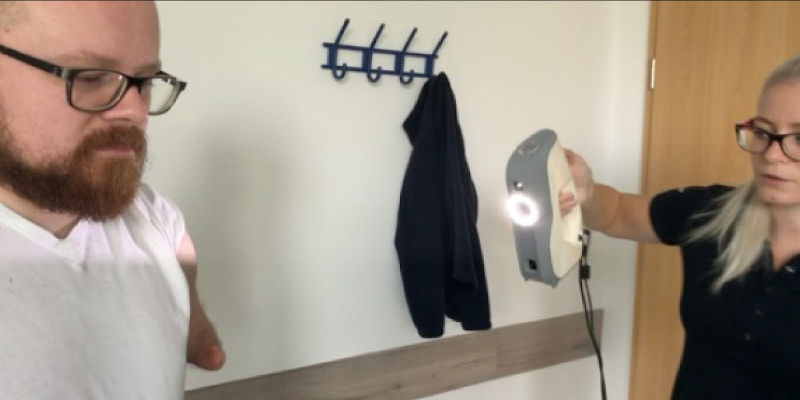
3D printing is already leading medical developments, so exploring the possibilities offered by 3D scanning technologies is a logical next step. Dentistry, for example, uses structured light for intraoral scanners, making the resulting scans more accurate and improving patient satisfaction.
Other Applications
Structured light scanning is used for a wide variety of tasks and outcomes.
It can be used to capture ‘real people’ body measurements, allowing fashion designers to tailor more suitable, stylish, and better-fitting clothing. This allows retailers to not only offer a more inclusive product range, but also provide unique, precision-tailored fashion in-house, as a premium price offering.
For more information on body scanners, you can check out our article on Full 3D Body Scanners.
A further, more controversial use of structured light scanners is in facial recognition technology. This technology uses structured light scanners to map individual faces, and compare them to digital records.
Structured Light Scanners Vs Laser Scanners
Structured light scanners are a versatile choice of scanning technology that works at similar ranges to laser scanners.
They also use the same triangulation technology as laser scanners to create accurate 3D models that can be edited in CAD software then printed in physical form on a 3D printer. While their functions are superficially identical, structured light scanners are the digital camera to laser scanner’s polaroid. The results are comparable, but structured light’s higher accuracy and focus are clear to see.

While laser scanners may be ideal for home use in scanning various objects to be later 3D printed, industries will likely favor structured light scans due to their versatility and high-definition results.
Take a 3D selfie, for example. A person’s face and body are scanned, uploaded to CAD software, and printed out as a statuette.
While laser scanning would make for a fine 3D selfie if done at home, those who make them as a business would do well to invest in a structured light scanner to ensure finer details and more accurate and impressive results.
With this in mind, it’s easy to see why structured light is used more in important areas like surgical reconstructions and dentistry.
Important Differences
While laser scanners produce less complex renderings overall, as they take fewer direct measurements of the object being scanned, structured light scanners are much more sensitive to lighting conditions. As such, individuals needing to accurately scan static structures like statues or building interiors would be better off purchasing a high-quality handheld laser scanner and investing in a light meter that will work with it.
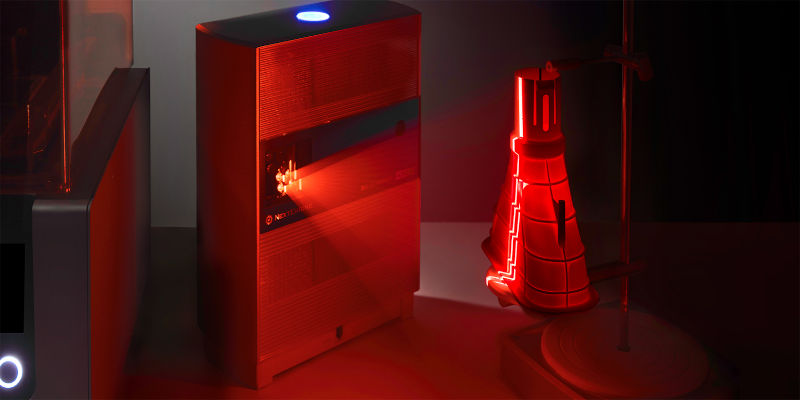
Laser scanners also offer the option of desktop models, while structured light scanners are geared towards handheld and tripod use.
However, it is relatively simple to build your own structured light scanner for home use from readily available tech items. This cannot be said of 3D laser scanners.
Which Do I Buy?
Put simply, if you want to scan things like trees, buildings, or outdoor sculptures, buy a 3D laser scanner.
If you’ll mostly be working indoors, and want the most accurate rendering possible, then a structured light scanner will be more suited to your needs.
Other articles you may be interested in:




